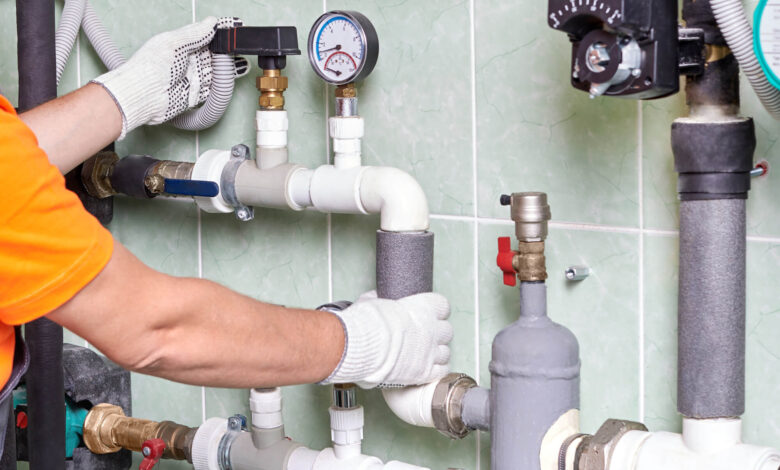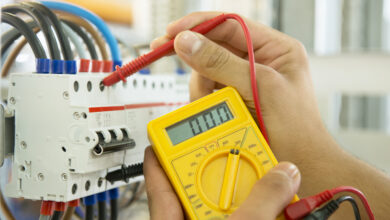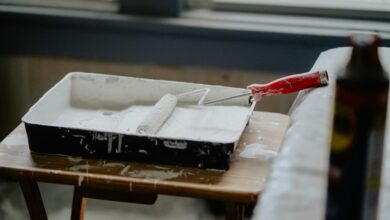How to Quickly Identify and Fix Damaged Plumbing Pipes

An unexpected pipe burst can quickly cause severe water damage to your home’s walls, floors, and ceilings. Hence, it’s essential to understand the signs that suggest this kind of problem to take preventive measures and protect against potential damage.
Continue reading to learn how to recognize the signs of potential pipe bursts at home and take preventive measures. For more guidance, visit https://www.fullspeedplumbing.com/.
1. Look for signs of damage
Pipes may break for many reasons, from natural catastrophes such as earthquakes and construction activities to age and poor maintenance, resulting in leakage or weakening over time. When left unaddressed, these problems could lead to burst pipes that require costly repairs and water damage to your home.
Signs that you may have a broken pipe include:
- Low water pressure
- Puddles on the floor or ceiling
- Discolored or damp walls
- Unexplained increases in your water bill
A damaged pipe may also present electrical hazards if it’s near an exposed wire.
Signs that your pipes may be broken include unusual noises when turning on faucets, often associated with water hammers. This occurs when water suddenly stops or changes direction abruptly, creating a shockwave that rattles loose pipes.
Other indicators that you might have a damaged pipe could include brownish stains on ceilings or walls and water spots on carpets and furniture – if this is something you recognize immediately to address before it escalates further.
2. Turn off the water
Whenever you detect a burst pipe or suspect leakage in your plumbing system, the first thing to do is switch off your water. This will stop further leakage of pipe into floors, walls, and ceilings, as well as minimize potential damages caused by overflow.
Turn off your home’s main water supply valve, often found in a basement, crawlspace, or near the garage water meter. This small oval-shaped valve usually opens clockwise (rightward).
To let any water that may still be in the pipes escape, turn off your main water valve and then open a low-flow faucet. Doing this will relieve pressure and make working on them more straightforward.
Knowledge of your home’s water shut-offs is also beneficial in case there’s ever an emergency requiring immediate water access. If you don’t know, ask other household members – they might know where the main valve or an appliance’s shut-off valve is located.
Try turning off the water to the fixture—such as a sink, shower, or toilet—if the damaged portion of your pipe lacks a shut-off valve. If this doesn’t work, use push-to-connect fittings or straight slip repair couplings as temporary connections if an inaccessible shut-off valve is unavailable.
3. Check the water pressure
Pipe leaks can drain resources immensely, but early detection could save considerable damage. The first step should be locating the broken pipe, which may prove challenging if it is hidden inside walls.
Look out for damp patches on walls, floors, or ceilings as possible indicators that something is amiss – leakage could result in water damage or mold formation if left unaddressed, so take steps as quickly as possible to address any such problems that arise.
Dropped water pressure is another sign you need to call in a plumber, as it could be caused by sediment accumulation in pipes or issues with municipal water supplies. If it has happened over an extended period, corrosion could also be to blame.
To check your water pressure, turn on all faucets in your house and flush your toilet before taking a PSI reading with a pressure gauge. Generally, home water pressure should fall between 40-60 PSI.
If it falls outside this range or higher than expected, it should be addressed by calling in a professional. They can fix plumbing pipes to restore normal pressure levels; alternatively, they could install a water pressure regulator to assist.
4. Remove the pipe
Broken pipes should be addressed immediately to minimize further damage; however, when professional plumbers arrive, you can take steps to help reduce potential risk and minimize damages until a professional can come and assess the situation.
Begin by spotting the source of the leak and its location on the pipe; this is easily done by following it from your water meter to your house. When you have found it, locate and shut off its shut-off valve before flushing all toilets and opening all faucets to drain any remaining water.
If the pipe is located inside your home, cutting away some drywall may provide access. Before taking this approach, however, be certain that you can do it safely without cutting through any other pipes passing through walls that your actions might threaten.
You should excavate a trench outside your home to reach and replace a damaged section of a pipe. Once discovered, use a pipe cutter and slip coupling to cut away and connect the new section with the existing line while also applying the plumber’s tape around areas where metal pipes connect for maximum seal.



